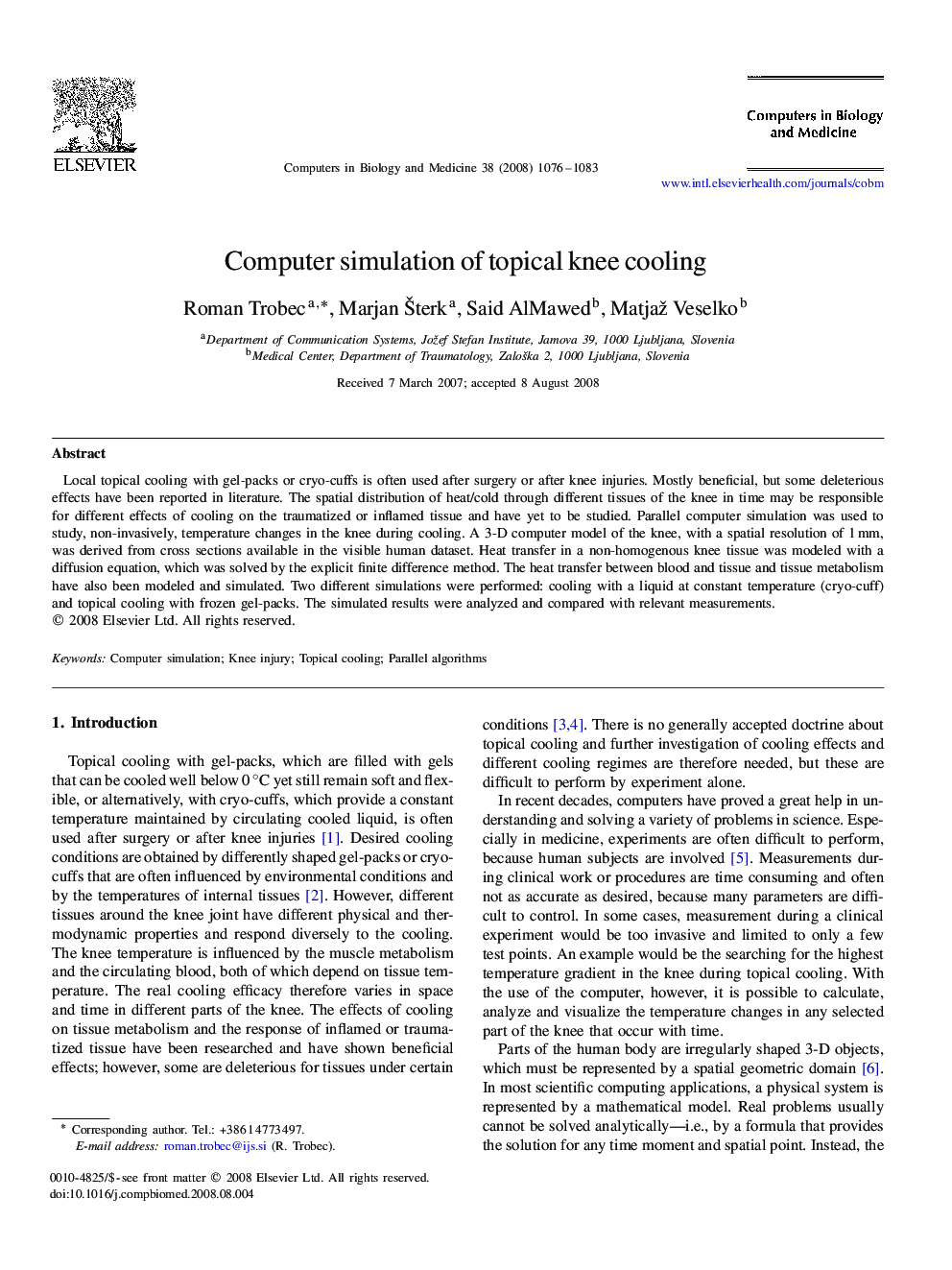| Article ID | Journal | Published Year | Pages | File Type |
|---|---|---|---|---|
| 506109 | Computers in Biology and Medicine | 2008 | 8 Pages |
Local topical cooling with gel-packs or cryo-cuffs is often used after surgery or after knee injuries. Mostly beneficial, but some deleterious effects have been reported in literature. The spatial distribution of heat/cold through different tissues of the knee in time may be responsible for different effects of cooling on the traumatized or inflamed tissue and have yet to be studied. Parallel computer simulation was used to study, non-invasively, temperature changes in the knee during cooling. A 3-D computer model of the knee, with a spatial resolution of 1 mm, was derived from cross sections available in the visible human dataset. Heat transfer in a non-homogenous knee tissue was modeled with a diffusion equation, which was solved by the explicit finite difference method. The heat transfer between blood and tissue and tissue metabolism have also been modeled and simulated. Two different simulations were performed: cooling with a liquid at constant temperature (cryo-cuff) and topical cooling with frozen gel-packs. The simulated results were analyzed and compared with relevant measurements.
